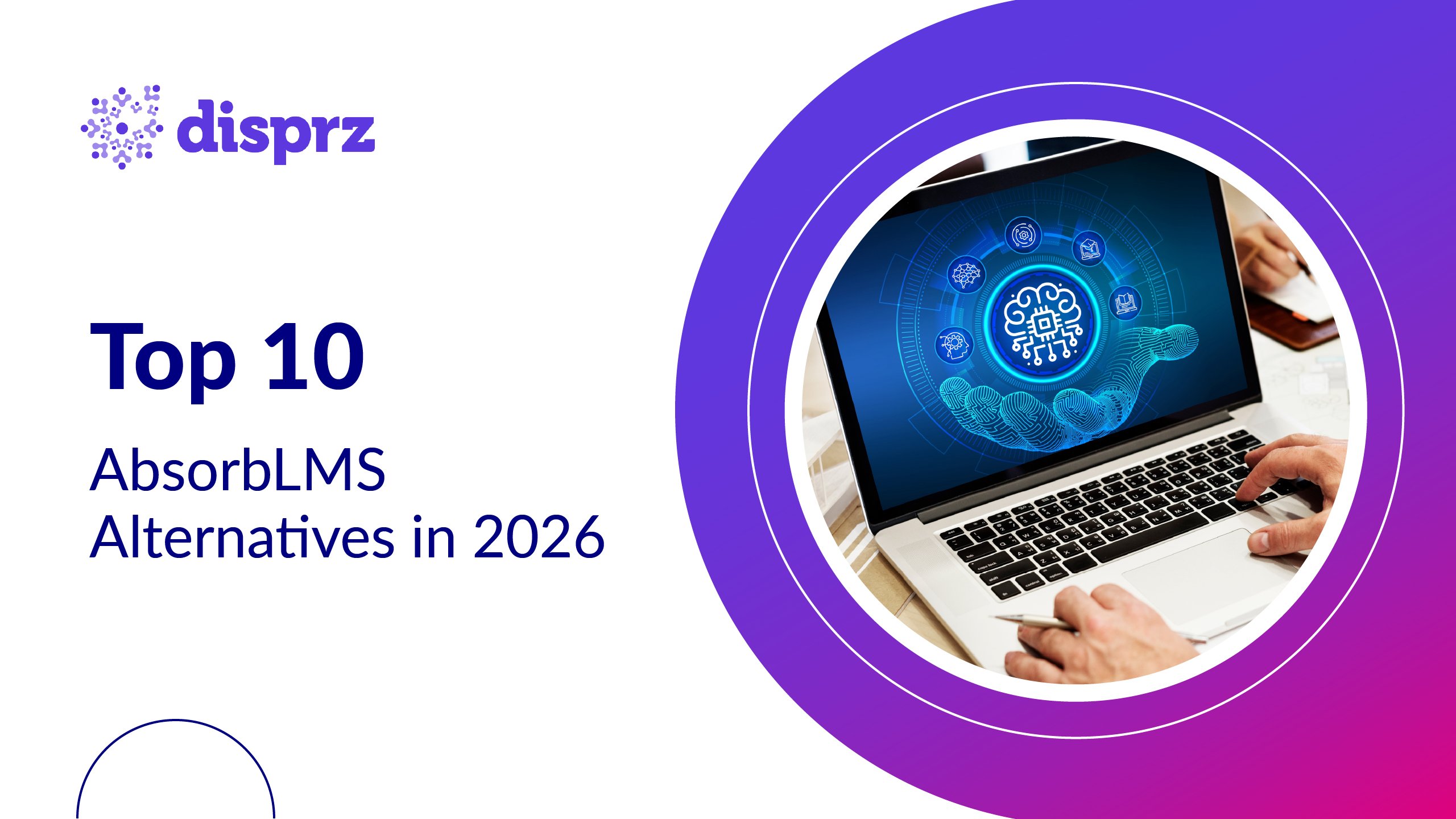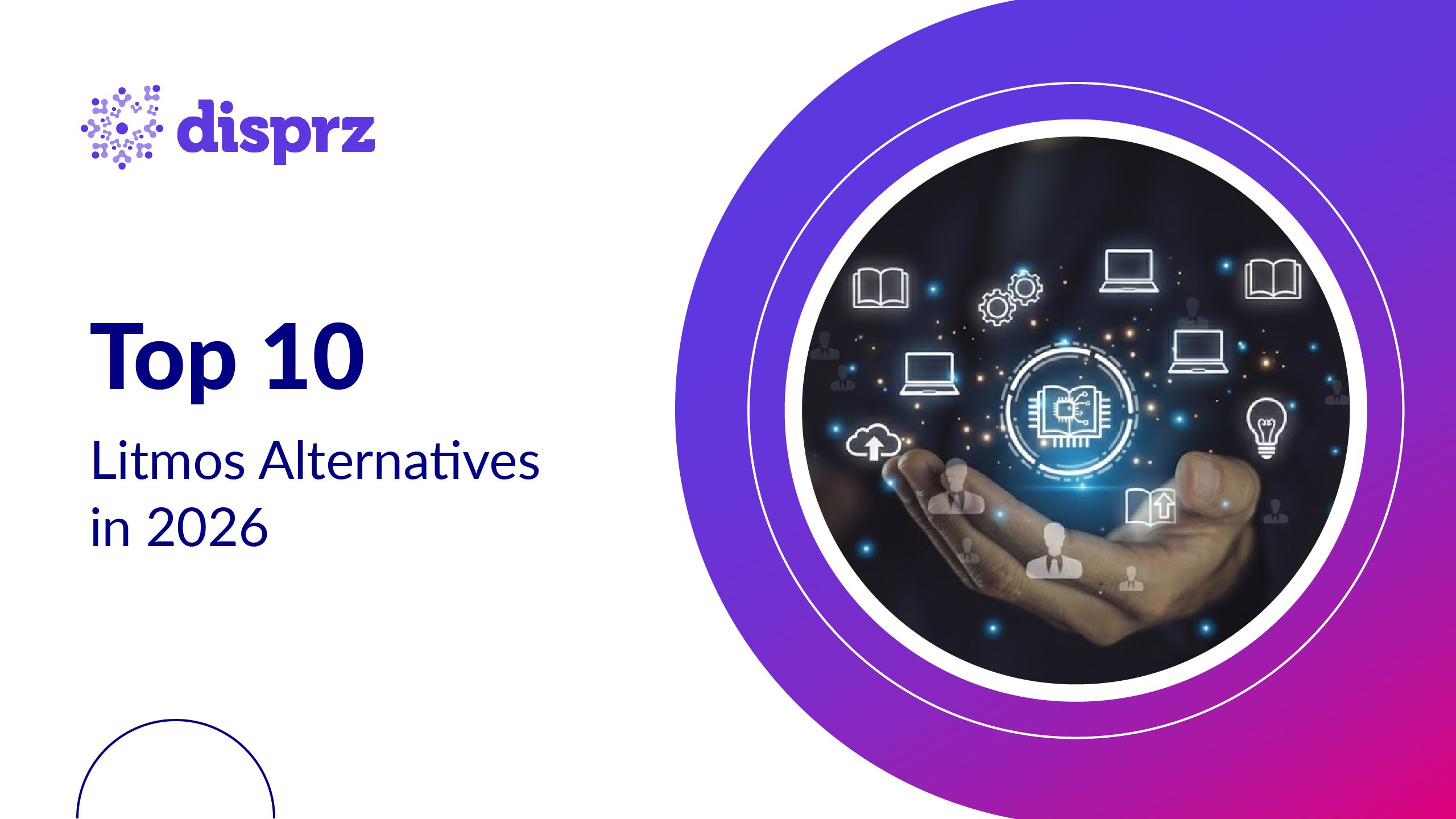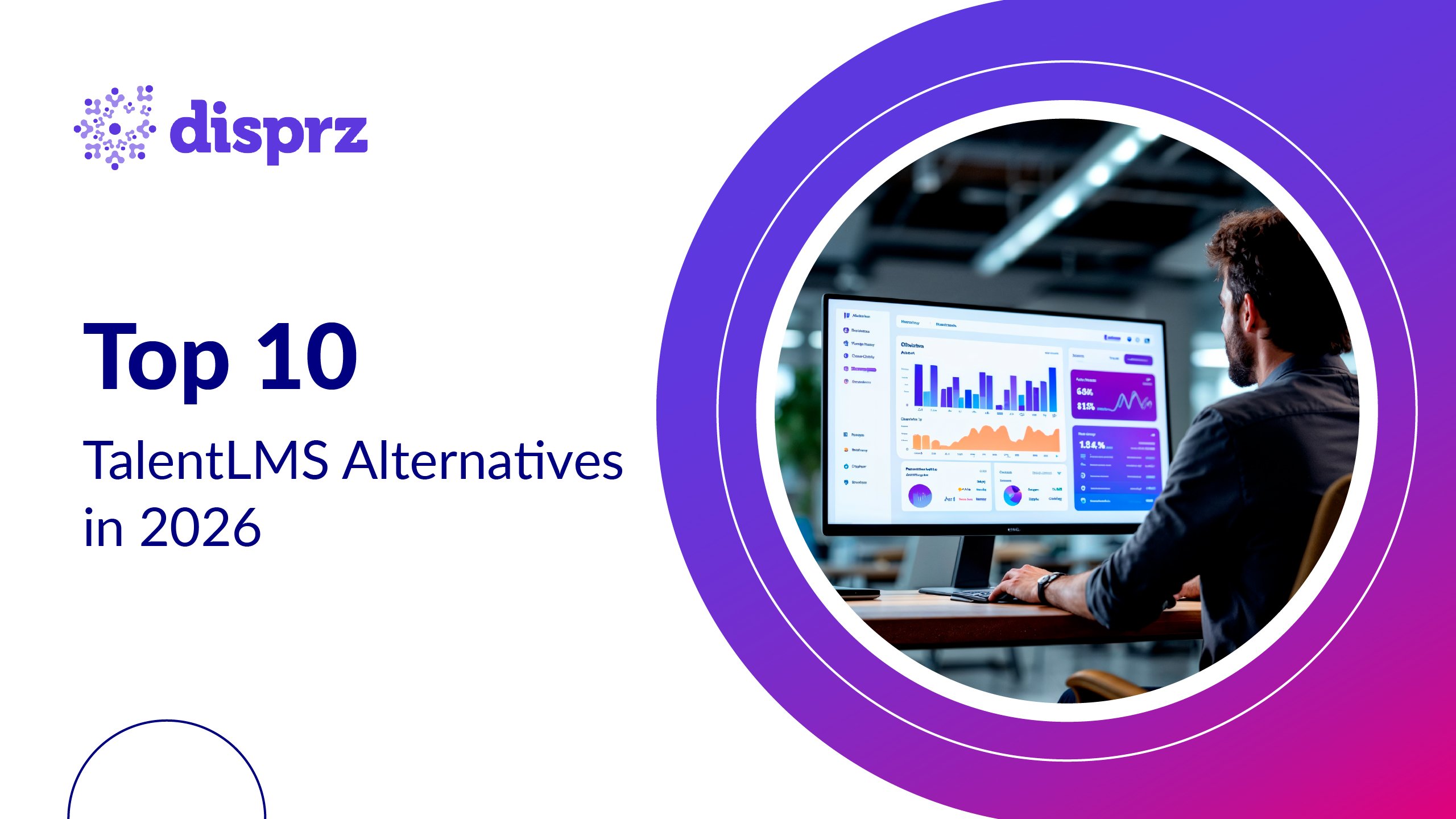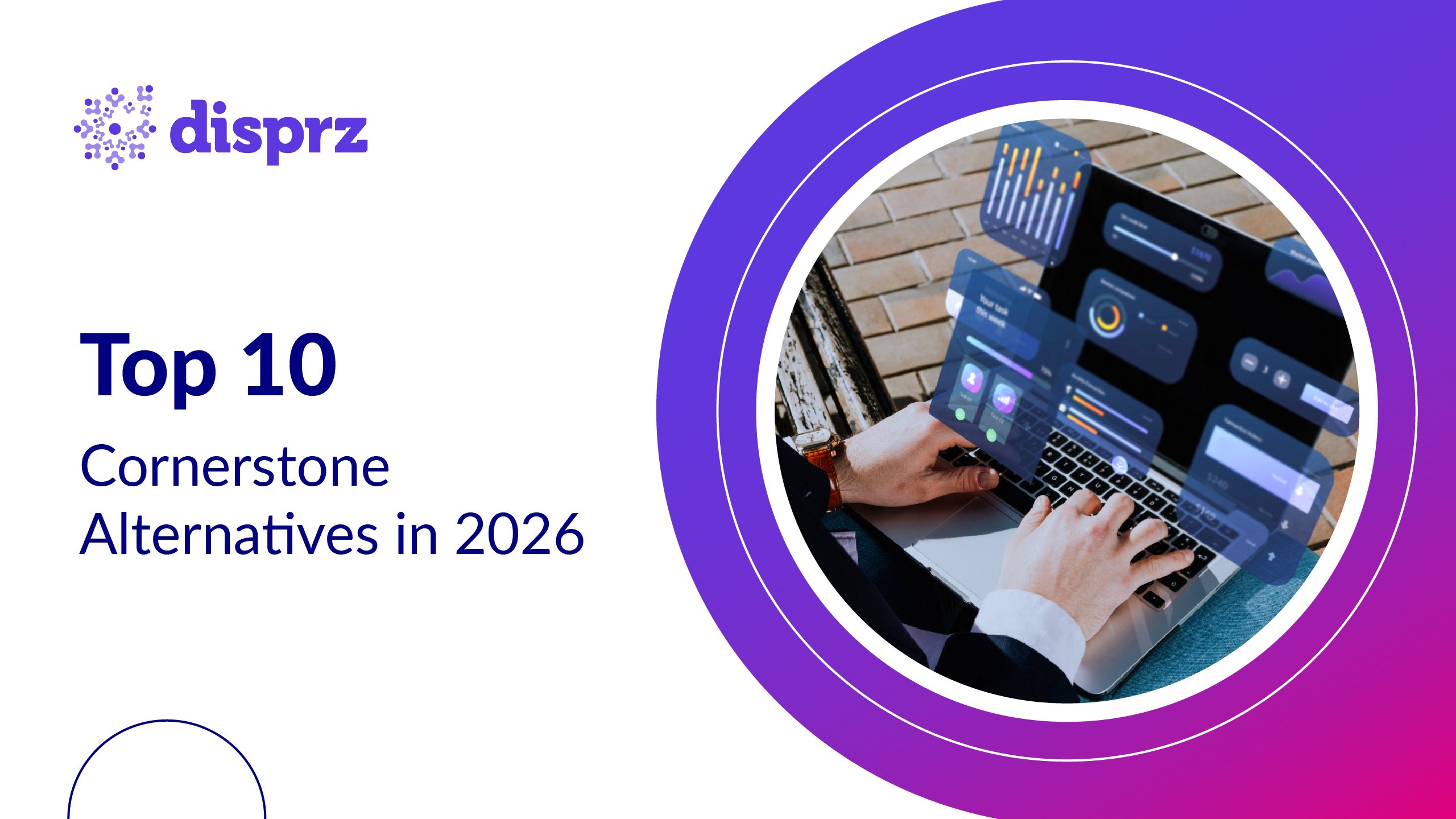Too many performance reviews end with vague development goals. Too many learning investments sit misaligned with actual business needs. And too often, managers realize too late that their teams lack the skills to meet tomorrow’s demands.
That’s the gap.
Skills gap analysis is a process by which organizations identify the chasm between their current capabilities and future goals, and it’s becoming increasingly critical by the day. But how do organizations traditionally approach it? Manual. Lagging. And often disconnected from real-time business strategy.
The good news: Artificial Intelligence (AI) is rewriting that story.
Why Is Skills Gap Analysis Critical for Organizations?
When teams fall short of a goal, it’s rarely because they weren’t working hard enough. More often, it’s because the required skills weren’t fully there or weren’t fully visible.
Every business priority, whether it’s launching something new or evolving how the organization operates, assumes that people have the capabilities to deliver. But those assumptions don’t always hold up.
A good skills gap analysis gives you that visibility. It shows where your teams stand today and what they’ll need to meet tomorrow’s expectations. You stop reacting to problems and start preparing for them.
Questions like these come into focus:
-
Do we have the depth of skill we need across critical teams?
-
Are we losing capability faster than we’re developing it?
-
Should we double down on upskilling or bring in new talent?
And here’s what often gets missed: this isn’t just a business exercise. People want to grow. They want to know what’s next and how to get there. A well-done skills analysis helps them see the path and gives managers a way to support it without guesswork.
Done right, it connects business direction with individual development. It builds alignment. And it shows your team that you’re tracking performance and at the same time investing in potential.
Challenges with Traditional Skills Gap Analysis
If you’ve done a skills gap analysis before, you know it’s not easy.
It starts with chaotic data, such as spreadsheets, outdated job descriptions, and survey fatigue. You ask function managers to rate employee skills. You ask employees to self-assess. You chase down responses and then try to reconcile wildly different views.
The result? A snapshot that’s outdated by the time you finish it. More opinion than fact. More static than strategic.
Some of the key issues:
-
Inconsistency: No shared taxonomy of skills, which means people talk past each other.
-
Subjectivity: Self-assessments are biased. Manager ratings vary wildly.
-
Latency: The process is too slow to match the speed of business change.
-
Siloed data: Learning records, performance data, and project experience live in different systems, and don’t talk to each other.
Most critically, traditional approaches don’t keep up with how skills evolve. By the time you detect a gap, it’s already widened.
How AI Transforms Skills Gap Analysis
Imagine moving from guesswork to precision. AI replaces assumptions with data-driven insights by analyzing the projects people lead, the content they engage with, and the outcomes they achieve.
AI-powered skills gap analysis taps into multiple data sources across your tech ecosystem, from learning platforms, performance systems, project tools, and even communication channels. It identifies real skill signals from actual behavior and results beyond just self-reported or static assessments. This allows for a dynamic, accurate view of your workforce’s capabilities and development needs.
Here’s how it changes the game:
Dynamic skill inference
AI models can detect emerging skills by analyzing real-world activity, like leading a sprint or completing a certification, without relying solely on self-reporting.
Standardized taxonomies
AI normalizes and maps skills across teams and roles, so you get side-by-side comparisons.
Predictive insights
AI gives you the visibility to see beyond today’s gaps; you can forecast future ones based on industry trends, role evolution, or business strategy.
Continuous updates
With real-time data, your analysis stays live. No more one-and-done PDFs.
Overall, AI shifts the focus from talent audits to talent intelligence.
Benefits of Using AI in Skills Gap Analysis
When you apply AI to skills intelligence, three things happen:
1) You make smarter workforce decisions
Instead of hiring based on job titles or assumptions, you can hire based on verified skill gaps. You can design learning programs that address real capability needs. And you can redeploy talent based on where they’re strongest, not just where they are. This will also help you establish a continuous learning culture within the organization.
2) You unlock internal mobility
One of the biggest hidden costs in organizations? Missed opportunity. People with the potential to grow into new roles are often overlooked because their skills aren’t visible. AI brings those hidden capabilities to the surface, making mobility possible and attrition less likely.
3) You drive skills-based transformation
Want to move to a product-led org? Build an AI Center of Excellence? Scale agile delivery?
These aren’t just org design shifts—they’re skills shifts. AI helps you architect a skills roadmap that aligns to business transformation, not just HR cycles.
In short, you move from reactive to proactive. From descriptive to strategic.
6 Steps to Conduct Skills Gap Analysis with AI
Let’s break it down into a practical workflow. Here’s how leading organizations approach AI-powered gap analysis:
Step 1: Define the business objective
Start with the “why.” What transformation or strategic shift are you enabling? Whether it’s AI adoption, global expansion, or digital transformation, that goal should guide your skills map.
Step 2: Map roles to skill profiles
Use AI to build dynamic, data-informed skill profiles for each key role, not just based on job descriptions, but also by analyzing top performers, industry benchmarks, and evolving trends.
Step 3: Infer current skill levels
Aggregate data from learning systems, project platforms, performance reviews, and even peer feedback. Let AI infer skills from actual behavior, not just checkboxes.
Step 4: Identify gaps and strengths
Run analysis to pinpoint where critical gaps exist, not just at the individual level, but across teams, geographies, and business units. Highlight latent strengths and potential talent pools.
Step 5: Recommend actions
AI can suggest personalized upskilling paths, internal job rotations, or hiring needs, turning insight into action.
Step 6: Track progress continuously
This is where traditional approaches fall short. With AI, you can monitor progress in real time, adjusting plans as business needs change.
Use Case: Skills Gap Analysis for a Digital Marketing Manager
To bring the concept to life, let’s walk through a representative example of how high-performing organizations typically conduct AI-powered skills gap analysis for a business-critical role.
We’ve chosen the Digital Marketing Manager role that’s rapidly evolving as organizations double down on digital growth, automation, and AI-first performance campaigns.
Business Context
A global retail brand is expanding into new digital markets and wants to increase revenue from performance marketing by 40% over the next two quarters. The Chief Marketing Officer (CMO) asks HR and L&D to ensure that Digital Marketing Managers across regions have the skills to:
-
Run ROI-positive multi-channel campaigns
-
Optimize AI-driven ad platforms (Meta, Google)
-
Leverage advanced analytics and attribution models
Let’s say the company uses an AI-powered skills intelligence platform integrated with their learning ecosystem, project tracking tools, and performance data systems.
Here’s what it would look like.
AI-Powered Skills Gap Dashboard Snapshot
(as seen by HRBP or Functional Head)
|
Skill Category |
Target Skill |
Org Benchmark |
Team Average |
Gap |
Confidence Level |
Actionable Insight |
|
Paid Advertising |
Meta Ads Optimization |
Advanced |
Intermediate |
High |
✅ High |
Enroll 3 team members in Meta Blueprint Advanced Certification |
|
Data & Analytics |
Attribution Modeling |
Advanced |
Beginner |
Very High |
⚠️ Moderate |
Pair top analysts with marketers for cross-training |
|
AI Marketing Tools |
Generative Ad Creation (e.g., AdCreative.ai) |
Intermediate |
Basic |
High |
✅ High |
Create an internal workshop using GenAI and case studies |
|
SEO & Content Strategy |
Organic Traffic Optimization |
Intermediate |
Intermediate |
None |
✅ High |
No action required – maintain current efforts |
|
Communication & Reporting |
Marketing ROI Storytelling |
Advanced |
Intermediate |
Medium |
✅ High |
Assign quarterly presentations for leadership visibility |
Visual Elements on the Dashboard
|
Skill Category |
Clusters related skills into high-level domains—like Paid Advertising or Analytics—so you can see where capability is concentrated or missing at a strategic level. |
|
Target Skill |
Lists the specific, business-critical skill needed for a role, project, or transformation goal. These are often benchmarked from top performers or future-ready role maps. |
|
Org Benchmark |
Shows the proficiency level the organization expects for each skill, based on business needs, market standards, or internal high performers. |
|
Team Average |
Uses real-time behavioral signals (from projects, learning, and tools) to infer the current skill level of the team or individual. |
|
Gap |
Highlights the delta between the target and actual proficiency. Gaps are often tagged as low, medium, high, or critical. |
|
Confidence Level |
Indicates how strong the AI’s inference is, based on the quantity and quality of underlying signals (e.g., validated activity vs self-assessment). |
|
Actionable Insight |
AI-generated recommendations, whether that’s a targeted course, a mentoring match, or a role rotation, tailored to close that specific gap. |
What Makes This High-Impact?
-
Live, role-based skill benchmarks: Pulled from top performers + industry data (not just job descriptions)
-
Signal-based skill inference: AI analyzes campaign data, certifications, Slack convos, even project tags
-
Talent mobility triggers: Hidden stars identified for global expansion teams based on inferred skills
-
Feedback loop: Skill improvements re-assessed quarterly through auto-updated dashboards
Outcomes
When organizations use AI-powered skills gap analysis:
-
They report a 20–40% faster time to upskill in critical roles
-
Internal talent mobility increases by 30% or more with better skill visibility
Conclusion
The future belongs to companies that can adapt, and that requires a workforce that’s constantly evolving. Skills gap analysis isn’t a one-time exercise. It’s an operating model for how you grow, align, and mobilize talent.
AI makes that model possible. By surfacing hidden skills, automating analysis, and aligning development with business goals, AI helps you close the gap between potential and performance. It turns your skills strategy from static to self-improving. And it gives every employee, not just a career path, but a capability runway.
At Disprz, we help organizations operationalize this shift. Our skills intelligence platform connects learning, performance, and capability building into one cohesive system, so you can identify gaps in real time, personalize development, and drive measurable business impact.
FAQs
1) How does AI improve skills gap analysis?
AI enhances skills gap analysis by making it dynamic, data-driven, and real-time. Instead of relying on manual self-assessments or outdated job descriptions, AI pulls signals from across your systems, learning platforms, project data, and communication tools to infer real skills. It also standardizes skill taxonomies and identifies gaps or strengths at scale, offering actionable insights much faster than traditional methods.
2) Why is skills gap analysis important for employee retention?
Employees want to feel seen and supported in their growth. When you understand their current skills and where they can go next, you create a clear path for development. That clarity builds trust. It shows investment. And it opens up internal mobility, which is one of the strongest levers for retention. Skills gap analysis ensures development is strategic, not performative.
3) How does skills gap analysis align with workforce planning?
Skills gap analysis gives workforce planning its edge. Instead of planning based on roles or headcount alone, you plan based on capabilities. Whether you’re expanding a team, adopting new tech, or shifting market focus, knowing your skill inventory and gaps helps you make smarter decisions. It ensures hiring, training, and redeployment are all aligned with business strategy.









